Filter Search
New Residential Projects in Bangalore
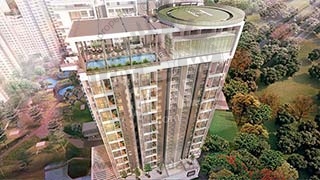
Bhartiya City Nikoo Homes
Sarvagna Nagar, Thanisandra, Thanisandra, Bangalore
Studio, 1 BHK, 1.5 BHK, 2 BHK, 3 BHK,
760 Sq.ft To 2673 Sq.ft
Rs 35 Lacs Onwards
Bhartiya City
Investor / Resale Options Available
+91 98205 75619
Bhartiya City is a mini world all together with a new phase launched Nikoo Homes. This project offers maximum choice of homes, right from Studio Apartments till Skyvillas everything is available out here. So that no requirement is left behind. Whatever facilities you can think is available out here....
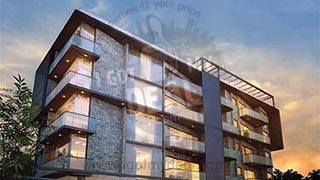
Skav Mekhri Ritz
Cunningham Road, Cunningham Road, Bangalore
4 BHK Flats
1618 Sq.ft To 2278 Sq.ft
Rs 2.50 Cr Onwards
SKAV
Investor / Resale Options Available
+91 98205 75619
Skav Mekhri Ritza residential project of Ground + 4 Floors offers exclusive and limited apartments of 4BHK for sale. This project is situated at Lavelle Road, Bangalore. Some of the closest routes to this locations are Cunningham road, 7th cross road and the landmark includes Chung's chinese corner,...
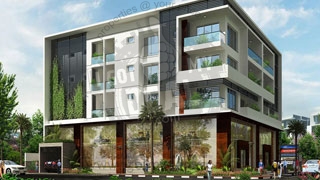
Skav Audel
Jogupalya, Cambridge Road, Cambridge Layout, Bangalore
4 BHK Flats
2800 Sq.ft To 3956 Sq.ft
Rs 2.75 Cr Onwards
SKAV
Investor / Resale Options Available
+91 98205 75619
Skav Audel is an under construction residential project coming up at Cambridge cross Road, Bangalore which is being developed by the most popular developers "SKAV". This project offers only 4 BHK but with different size range so that one can choose as per their requirement. The size differs from 280...
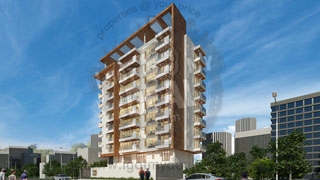
Skav Ahuja Laguna
Kensington Road, Ulsoor, Ulsoor, Bangalore
2 BHK & 3 BHK Flats
1155 Sq.ft To 3023 Sq.ft
Rs 2 Cr Onwards
SKAV
Investor / Resale Options Available
+91 98205 75619
Skav Ahuja Laguna is situated in a very prime location of Bangalore which is close to Ulsoor lake at Kensington Road. This is a Stilt + 9 Floors residential tower comprising of 2 BHK & 3 BHK apartments with an area of 1155 Sq.ft To 3023 Sq.ft.Ahuja Laguna is fully loaded with modern amenities an...
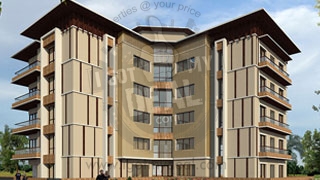
Skav Akasa
Clark Road, Davis Road, Davis Road, Bangalore
2 BHK, 3BHK & 4 BHK Flats
1618 Sq.ft To 4995 Sq.ft
Rs 2.40 Cr Onwards
SKAV
Investor / Resale Options Available
+91 98205 75619
...
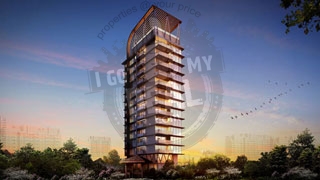
Skav Bliss
Clark Road, Davis Road, Davis Road, Bangalore
4 BHK Flats
3571 Sq.ft
Rs 4.99 Cr Onwards
SKAV
Investor / Resale Options Available
+91 98205 75619
...
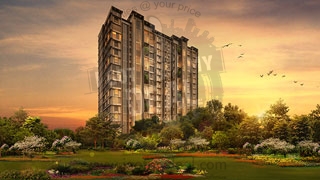
Skav Aastha
Ashok Puram Main Road, Mahalakshmipuram, Mahalakshmipuram Layout, Bangalore
2 BHK & 3 BHK Flats
1350 Sq.ft To 1950 Sq.ft
Rs 85 Lacs Onwards
SKAV
Investor / Resale Options Available
+91 98205 75619
...
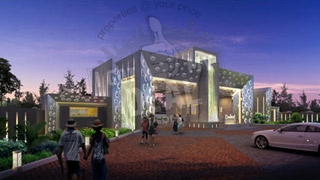
Colaco Oval Reef
Southegowdanahalli, Devanahalli, Devanahalli, Bangalore
Residential Plots Flats
4200 sft to 4800 sft.
On Request
Colaco Builders
Investor / Resale Options Available
+91 98451 75506
Colaco Oval Reef is a beautiful project which offers fully developed residential plots for sale. This project covers 50 Acres of Landscaped land that includes 192 plots that are ready for development. There are various size range options available from 4200 Sq.ft To 4800 Sq.ft. Here there is so much...
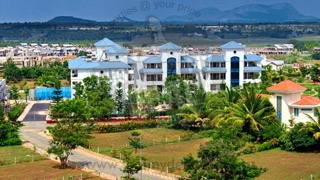
Colaco Swiss Town
Southegowdanahalli, Devanahalli, Devanahalli, Bangalore
Fully developed Residential Plots Plot
4800 Sq.ft To 5600 Sq.ft
Rs 1.50 Cr Onwards
Colaco Builders
Investor / Resale Options Available
+91 98451 75506
...
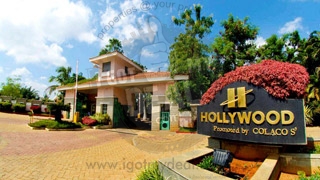
Colaco Hollywood Town
Sadahalli, Devanahalli, Devanahalli, Bangalore
Fully developed Residential Plots Plot
4800 Sq.ft To 5600 Sq.ft
Rs 3.84 Cr Onwards
Colaco Builders
Investor / Resale Options Available
+91 98451 75506
Hollywood Town & Swiss Town are a Twin Township Project. Out of which Hollywood town is now offering fully developed residential plots for sale which are ready for registration. The project is thoughtfully planned along the lines of the trendy style housing projects. Its is developed by Continen...
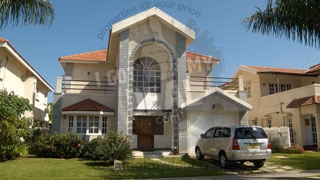
Adarsh Palm Meadows
Airport Varthur road, Whitefield, Whitefield, Bangalore
3 BHK & 4 BHK Villas
2817 Sq.ft To 3645 Sq.ft
Rs 3.42 Cr Onwards
Adarsh Developers
Investor / Resale Options Available
+91 98205 75619
...
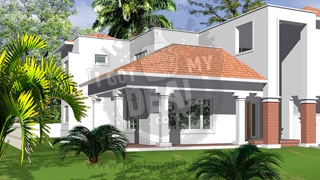
Adarsh Serenity
Kannamangala, Whitefield, Whitefield, Bangalore
3 BHK & 4 BHK Villas
2210 Sq.ft To 8224 Sq.ft
Rs 2.25 crores Onwards
Adarsh Developers
Investor / Resale Options Available
+91 98205 75619
...
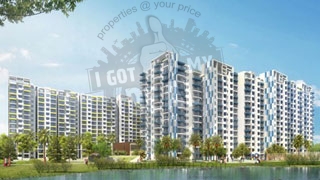
Adarsh Palm Retreat Lakefront
Varthur Post, Outer Ring Road , Outer Ring Road, Bangalore
2 BHK, 3 BHK, 4 BHK & Penthouses Flats
1320 Sq.ft To 2000 Sq.ft
Rs 79.99 Lacs Onwards
Adarsh Developers
Investor / Resale Options Available
+91 98205 75619
...
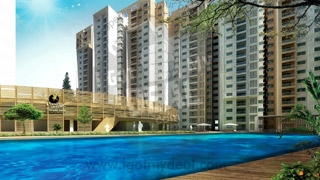
Prestige Temple Bells
Rajarajeshwari Temple, Kenchenhalli, Kenchanahalli, Bangalore
1 BHK, 2 BHK, 2.5 BHK & 3 BHK Flats
628 Sq.ft To 1611 Sq.ft
Rs 27 Lacs Onwards
Prestige Group
Investor / Resale Options Available
+91 98205 75619
Prestige Temple Bells is situated at Rajarajeshwari Temple, Kenchenhalli, RR Nagar, Bangalore. This is a new residential project which is constructed by Prestige Constructions. The project is well planned to be developed as 9 Towers of 15 Floors Each & 968 Apartments in Total. These towers will ...

Purva 270 Degree
CV Raman Nagar, CBD, CBD, Bangalore
2 BHK & 3 BHK Flats
1392 Sq.ft To 1980 Sq.ft
Rs 85.32 Lacs Onwards
Puravankara Group
Investor / Resale Options Available
+91 98197 02366
Puravankara Group has recently announced the most beautiful residential project ever in Bangalore. Not only this but the apartments available here for sale comes with a limited Pre-Launch offers.Purva 270 Degree is its new project that is located in CV Raman Nagar, CBD, Bangalore. The Largest Apartm...
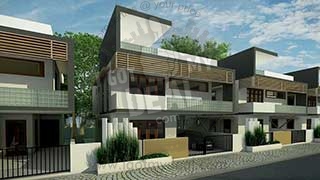
Hebron Le Lexuz Stoneview Villas
International Airport Road, Kuduragere, Kuduragere, Bangalore
4 BHK Villas Villas
2000 Sq.ft To 2400 Sq.ft
Rs 94 Lacs Onwards
Hebron Properties Pvt Ltd
Investor / Resale Options Available
+91 98205 75619
...
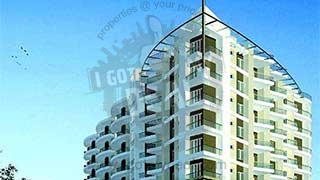
Hebron Towers
Puram hanging bridge, off Old Madras Road, Old Madras Road, Bangalore
2 BHK & 3 BHK Flats
1251 Sq.ft To 1753 Sq.ft
Rs 67 Lacs Onwards
Hebron Properties Pvt Ltd
Investor / Resale Options Available
+91 98205 75619
...
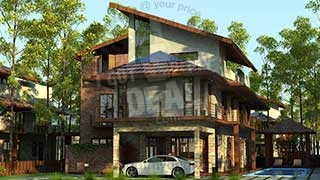
Hebron Enclave
K R Puram, TC Palaya Main Road, TC Palaya, Bangalore
5 BHK & 6 BHK Flats
5100 Sq.ft To 7000 Sq.ft Built-Up Area
5.24 Cr Onwards
Hebron Properties Pvt Ltd
Investor / Resale Options Available
+91 98205 75619
...
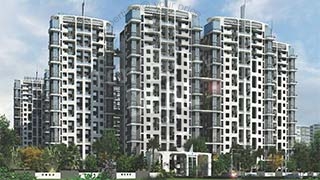
Arun Kaustubha
Manyata Tech Park, Thanisandra Main Road, Thanisandra, Bangalore
2 BHK & 3 BHK Flats
800 Sq.ft To 1800 Sq.ft Approx
Rs 50 Lacs Onwards
Arun Shelters
Investor / Resale Options Available
+91 98197 02366
...
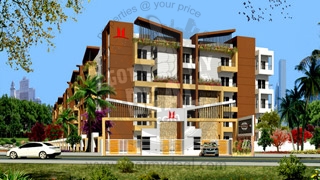
Midtown Opulent
Harohalli Road, Varthur, Bangalore
2 BHK and 3 BHK Apartment, Duplex Flat
1005 Sq.ft To 2980 Sq.ft
Rs. 35.16 Lacs Onwards
Midtown Structures
Investor / Resale Options Available
+91 98197 02366
Midtown Opulent is one of the finest ongoing residential project which is developing by Midtown Structures at Varthur, Bangalore. It is located near Harohalli Road. It has spacious 2 BHK, 3 BHK Apartment and Duplex with all splendid amenities such as swinmmin pool, clubhouse, gymnasium, health club ...
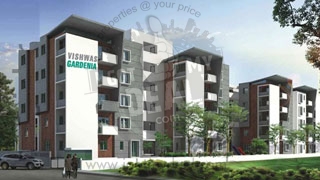
Vishwas Gardenia
Pemme Gowda street, Jayamahal, Jayamahal, Bangalore
2 BHK & 3 BHK Flats
1150 Sq.ft To 1625 Sq.ft
Rs 51 Lacs Onwards
Vikram Structures Pvt Ltd
Investor / Resale Options Available
+91 98197 02366
...
Read More About Bangalore & it's Real Estate Property Market
- Bangalore now known by its new name – Bengaluru – is the capital of the south Indian state of Karnataka.
- The existing Kannada name, Bengaluru, was declared the official name of the city in 2006.
- A succession of South Indian dynasties that included the Western Gangas, Cholas and the Hoysalas ruled over Bengaluru until 1537.
- Subsequent to India’s Independence in 1947, the city became the capital of the state of Mysore and later that of Karnataka, after it was formed in 1956.
- Located on the Deccan plateau at a height of over 900m (3,000 ft) above sea level, its elevation is the highest among major cities of India.
- It has an estimated population of about 8.42mn and a metropolitan population of approx 8.52mn.
- It is the third most populous city and fifth most populous urban agglomeration in India.
- Bengaluru also sometimes referred to as India’s Garden City, is blessed with a mostly pleasant climate all year round.
- The two primary urban zones of Bengaluru – city and cantonment – which had developed as independent entities merged into a single urban centre in 1949.
- Bengaluru is known as the ‘Silicon Valley of India’, because of its status as India’s leading information technology (IT) hub and exporter.
TOURIST ATTRACTIONS:
- Bengaluru Fort: Originally built by a feudatory of the Vijayanagar Empire and the founder of Bangalore, Kempe Gowda, in 1537. It was later converted into a stone fort by Hyder Ali in 1761.
- Bengaluru Palace: Spread across a vast 450-acre property in a prime locality of North Bangalore, the palace is surrounded by a vast garden of various species of trees and is famous for housing nearly 30,000 paintings.
- Bannerghatta National Park: Covering a massive 25, 000 acres, this park about 22kms from the city and is home to a rich natural zoological reserve. There is a small museum showcasing zoological exhibits and a butterfly conservatory.
- Cubbon Park: This wonderful green island situated in the middle of the city was created in late 19th century by Major General Richard Sankey, the then British Chief Engineer of Mysore State. Thick bamboo gardens and many heritage buildings like Seshadri Iyer Memorial Hall, add a special beauty to this park.
- Indira Gandhi Musical Fountain: This popular dancing and musical fountain was commissioned in 1996 in the heart of the city on the Raj Bhavan Road on a 17-acre land beautifully landscaped plot. It is located opposite to the Jawaharlal Nehru Planetarium and close to the Vidhana Soudha and Cubbon Park.
- Lal Bagh: This picturesque botanical garden was commissioned by Hyder Ali in the 18th century and later developed by his son, Tippu Sultan. It’s spread over 200 acres and thousands of varieties of trees are found in it. The park has a huge rock, which is supposed to be more than 3, 000 million years old.
- Mantri Mall: It was the biggest mall of South India when it was inaugurated in 2010.Located at Malleshwaram, one of the oldest residential localities of the city. The Mall has retail outlets of almost all reputed national and leading global brands.
- Nandi Hills: Also known as Nandidurg, it features an ancient hill fortress about 60 km from the city. This spot is a popular picnic destination for the young and old of Bengaluru mainly due to its pristine evergreen forests and rich flora and fauna.
- National Gallery of Modern Art (NGMA): It is located in the prestigious heritage premises of the Manikyavelu Mansion. It is well equipped with a refurbished auditorium, an open air theatre, a reference library, offices, art storage space, a cafeteria and a museum.
- Tippu’s Palace: It was the summer residence of Mysore’s erstwhile ruler, Tipu Sultan. Its construction was started during Hyder Ali’s reign and completed during his son Tippu’s rule in the year 1791. Relics like the clothes worn by the erstwhile king, the silver and gold pedestals and the crown of Tipu Sultan are kept here.
- Wonderla Amusement Park: This 82-acre amusement park, one of the largest in India, is located at Bidadi, about 28 km into the Bangalore-Mysore road and features 56 thrilling rides, drawing both children and adults.
DEMOGRAPHICS:
- As per 2014 estimates, Bengaluru metro area has a population of approx 10,178,000, up from about 8.5mn in 2011.
- It is now the 18th most populous city in the world and the fastest-growing Indian metro behind New Delhi, growing at an impressive 38 percent from 1991-2001.
- The most common languages spoken here include: Kannada, Tamil, Telugu, Urdu, Malayalam and Hindi.
- An estimated 79 percent of the city’s population is Hindu, with Muslims accounting for about 13 percent, Christians at 6 percent and Jains at 1 percent.
- According to some surveys, about 10 percent residents of the city live in slums.
- Much of the population growth in Bengaluru has been driven by migration from other states, which in turn has increased tensions between the locals and immigrant population.
- Bengaluru is also said to have a skewed female-male gender ratio: 908 women for every 1,000 men. It also has the lowest work participation rate among women, with just 24 percent of women working.
- The population density of the city has increased by an estimated 47 percent in the last decade due to growth in employment opportunities that is attracting people here from across India.
- In 2011, there were 4,378 people per square kilometer, up from 2,985 ten years before.
- Bengaluru is now growing faster than ever, having crossed the 10mn mark in 2013.
- The urban region has grown three times faster than the state as a whole, and it is now home to about 16 percent of the state's population.
JOBS & EMPLOYMENT OPPORTUNITIES:
- Bengaluru is a major centre of economic and commercial activity in India, in addition to being one of the fastest growing cities in the country.
- In 2007, the city was rated as the third largest hub for high-net-worth individuals and home to over 10,000- US$ millionaires and 60,000 super-rich people with an investable surplus of INR 45mn and INR 5mn respectively.
- The headquarters of several major PSUs like Bharat Electronics Limited (BEL), Hindustan Aeronautics Limited (HAL), National Aerospace Laboratories (NAL), Bharat Heavy Electricals Limited (BHEL), Bharat Earth Movers Limited (BEML), Central Manufacturing Technology Institute (CMTI) and HMT (formerly Hindustan Machine Tools) are located here.
- The city also hosts several research and development centers for majors like ABB, Airbus, Bosch, Boeing, GE, GM, Google, Microsoft, Mercedes-Benz, Nokia, Oracle, Philips, Shell, Toyota and Tyco.
- Bengaluru is also known as the Silicon Valley of India because of the large number of IT companies situated here, which contributed approx 33 percent of the country’s INR 1442bn IT exports in 2006-07.
- Infosys and Wipro, among the country’s largest software companies are headquartered here.
- The city’s IT industry is divided into three main clusters – Software Technology Parks of India (STPI); International Tech Park, Bangalore (ITPB) and Electronics City located in the south of the city.
- Bengalūru is also a hub for bio-technology and related industries in the country, hosting approx 47 percent of the estimated 265 bio-technology companies in India in 2005.
- ISRO, India's premier space research organization, is also headquartered in Bengaluru.
TRANSPORT & CONNECTIVITY:
- Bengaluru is served by the new Kempegowda International Airport located at Devanahalli, about 40 kms from the city centre.
- The airport is the third busiest in India after Delhi and Mumbai in terms of air passenger traffic and the number of air traffic movements (ATMs).
- A rapid transit system called the Namma Metro is being built here.
- A 7-kilometre stretch beginning from Bayappanahalli to MG Road was made operational in October 2011, while another 10 km stretch was subsequently made operational from March 2014.
- Once completed, this will encompass a 42.3 km elevated and underground rail network comprising of approx 41 stations.
- It is expected to connect central locations in Bangalore to the airport near Devanahalli and Chikballapur.
- Bengaluru is also the divisional headquarters of the South Western Railway zone.
- There are four major railway stations in the city: Bangalore City junction, Bangalore Cantonment railway station, Yeshwantapur junction and Krishnarajapuram railway station, with railway lines towards Jolarpettai in the east, Chikballapur in the north-east, Guntakal in the north, Tumkur in the northwest, Nelamangala in the west, Mysore in the southwest and Salem in the south.
- The city is well connected by rail to other major cities in Karnataka, as well as most cities in other parts of the country.
- Buses operated by Bangalore Metropolitan Transport Corporation (BMTC) are an important and reliable means of public transport available in the city.
- BMTC also runs a fleet of air-conditioned luxury buses on major routes, and operates shuttle services from various parts of the city to the Kempegowda International Airport.
- The Karnataka State Road Transport Corporation operates 6,918 buses on 6,352 schedules, connecting Bangalore with other parts of Karnataka as well as other states.
- Yellow and black three-wheeler auto-rickshaws are a popular form of transport among residents here. Taxis are also available on call for inter-city travel.
INFRASTRUCTURE OUTLOOK:
- The state government’s budget for 2014-15 proposed infra projects worth an estimated INR 9, 476.86cr for Bengaluru to eradicate traffic jams, expand the public transport network, augment water supply and create new drainage facilities.
- The government has sanctioned approx INR 2,727 cr for these projects while the balance is expected to be accrued via various state government schemes, loans from Japan International Cooperation Agency and grants from the central government.
- The city’s Bruhat Bangalore Mahanagara Palike (BBMP) will execute projects worth approx INR 2,160cr, with the government sanctioning INR 1,527cr, grants from the finance commission and the state finance commission, Lake development scheme and the CMs Special Grant Scheme, with the rest being generated from the BBMPs own resources.
- The Bengaluru Development Authority (BDA) is slated to implement projects valued at approx INR 7,316.86cr.
- The BDA has also been allocated a sum of INR 1,200cr to construct an elevated corridor from Basaveshwara Circle to Hebbel Junction, develop 39 lakes and for afforestation purposes.
- Similarly the Bengaluru Water Supply and Sewerage Board (BWSSB) has been given the responsibility to execute several projects.
- These include the preparation of a detailed project report to supply water to 110 villages within the BBMP limits.
- Replace 74kms of sewage lines with 50 percent funding from the Megacity Revolving Fund from the Karnataka Urban infrastructure Development Finance Corporation (KUIDFC).
- The government has also announced the commissioning of the Peenva-Sampige road line and then implementation of Phase 2 of the Namma Metro covering a distance of approx 72.1kms comprising of 61 stations at a cost of approx INR 26.405cr.
REALTY MARKET OVERVIEW:
- Some of the city’s best performing areas in terms of price appreciation include: RMV (in the north), Rajarajeshwari Nagar (in the west) and HAL Layout (in the east).
- Property prices in these areas have appreciated by anywhere between 7-21 percent in the last one year or so.
- The ongoing metro corridor which is expected to boost inter-city connectivity is also casting a positive impact on the real estate fortunes of the areas along the route, with prices expected to zoom on the completion of this crucial project.
- The city’s residential market is likely to see an influx of approx 243,000 units in the next five years, as per a study conducted by global realty advisory Cushman & Wakefield.
- According to supply projections, approx 56 percent of the new units are likely to cater to the MIG, about 29 percent to the LIG and balance 15 percent to the HIG.
- Cumulative demand for residential units is expected to be about 438,000 units till 2018, with approx 44 percent in the MIG and 31 percent in the LIG.
- The total demand-supply gap is likely to touch approx 196,000 units especially in the HIG category.
- With the city attracting large number of top corporate honchos, demand in the premium and super premium residential category is expected to escalate in the future.
- As per the study total new demand for urban housing in India is expected to be nearly 13 million units by the end of 2018, of this the top 8 cities (including Bengaluru) are likely to constitute 23 percent or 2.95 mn units.
- Of the total additional demand across the Top 8 cities, MIG is expected to generate the highest volume of demand at 1.08 mn units until 2018, the LIG nearly 1.05mn units and the HIG at 0.52 mn units.
- Delhi-NCR is likely to have the highest supply of around 516,000 units delivered in the next five years, followed by Bengaluru with around 243,000 units and Mumbai with 203,000 units.
- Cities such as Ahmedabad, Bengaluru and Mumbai are expected to lead the ranks of those with a shortfall in housing units catering to the MIG.
